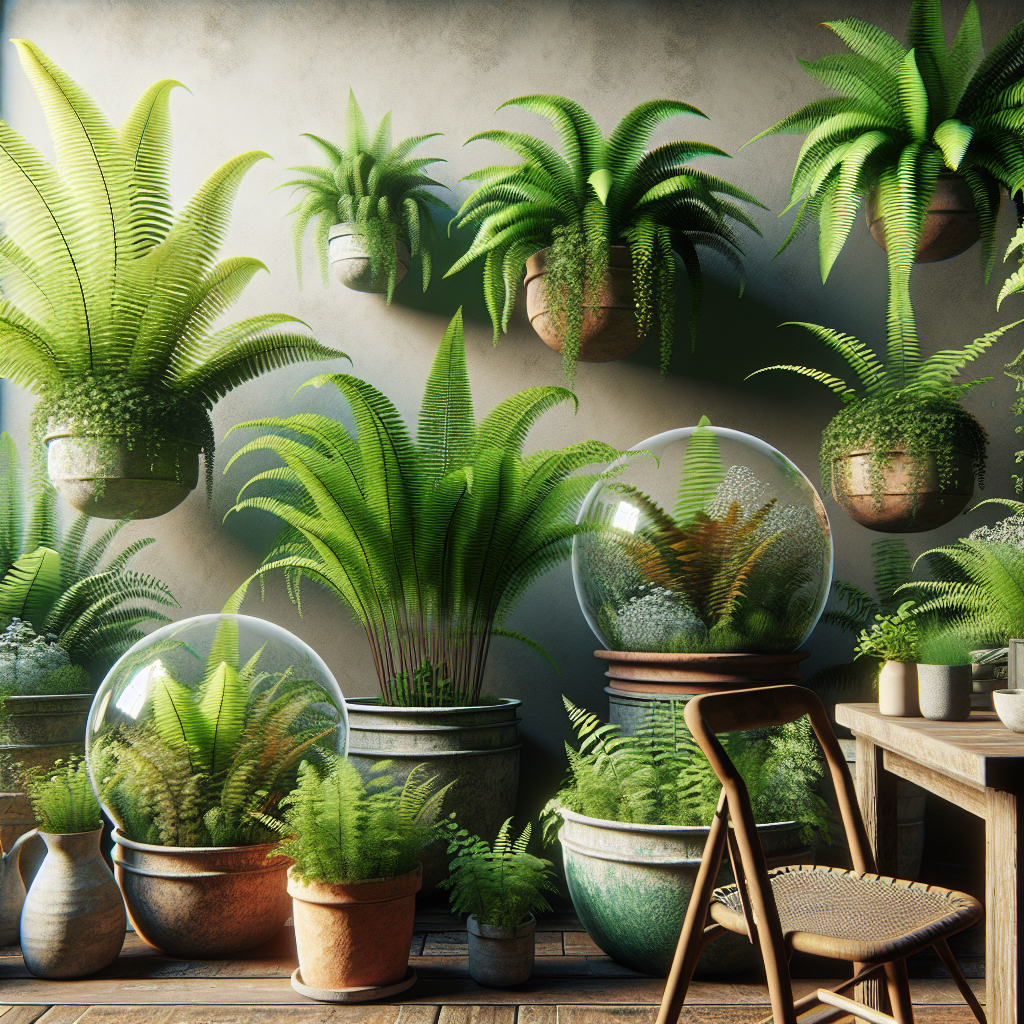Ferns are an exquisite addition to any garden, bringing a touch of elegance and lush greenery to the environment. While they are often seen planted in the ground, ferns can also thrive beautifully when grown in container environments. The beauty of ferns in containers lies in their versatility, as they can be easily moved around to suit different spaces and aesthetics. Whether you have a small balcony or a spacious patio, container-grown ferns can bring a sense of tranquility and serenity to your surroundings.
One of the main advantages of growing ferns in containers is that it allows you to create a mini oasis wherever you desire. From hanging baskets to large pots, there are endless possibilities for showcasing these stunning plants in a container setting. With their delicate fronds and graceful arching stems, ferns add a softness and charm that can transform any corner of your home or garden into a green sanctuary. In this article, we will explore the beauty of ferns when grown in container environments, along with tips on how to care for these unique plants to ensure they thrive and flourish.
**Benefits of Growing Ferns in Containers**
When it comes to gardening in containers, ferns are an excellent choice for several reasons. First and foremost, ferns are well-suited for container environments because they do not have deep root systems like many other plants. This means that they can thrive in pots or containers with limited space, making them perfect for small gardens or urban living where space is at a premium.
Another benefit of growing ferns in containers is that they are relatively low-maintenance plants. Unlike some flowering plants that require frequent deadheading or pruning, ferns simply need regular watering and occasional fertilizing to keep them healthy and vibrant. This makes them an ideal choice for busy individuals or those who may not have the time or expertise to dedicate to more high-maintenance plants.
**Choosing the Right Container**
When it comes to selecting the right container for your ferns, there are a few key factors to consider. First and foremost, make sure that the container has drainage holes at the bottom to allow excess water to escape. Ferns do not like sitting in waterlogged soil, so good drainage is essential for their overall health and well-being.
In terms of material, terra cotta pots are an excellent choice for growing ferns as they help regulate moisture levels by allowing soil to breathe. However, plastic pots can also work well as long as they have adequate drainage holes. When choosing the size of your container, make sure it is large enough to accommodate the root ball of your fern while still leaving some room for growth. Remember that most fern species prefer slightly cramped conditions rather than being too snug in their containers.
**Caring for Container-Grown Ferns**
Proper care is essential for ensuring that your container-grown ferns thrive and remain healthy over time. One of the most important aspects of caring for ferns is ensuring that they receive adequate water and humidity levels. Ferns prefer consistently moist soil, so be sure to water them regularly but avoid overwatering as this can lead to root rot.
Ferns also benefit from occasional misting or placing a water-filled saucer near their containers to increase humidity levels – especially during dry winter months or if you live in a particularly arid climate. Additionally, it’s important to provide your fern with indirect sunlight as direct sunlight can scorch their delicate fronds.
**FAQ**
1) Can I grow multiple types of ferns together in one container?
Yes! Mixing different types of fern species can create an interesting and dynamic display in your container garden. Just make sure that each type has similar light and humidity requirements so they all thrive together.
2) How often should I fertilize my container-grown fern?
Ferns generally do not require frequent fertilization since they don’t have high nutrient needs like some other plants. You can feed them with a balanced liquid fertilizer diluted at half strength every 4-6 weeks during the growing season (spring through early fall).
3) What should I do if my fern’s fronds start turning yellow?
Yellowing fronds on your fern could indicate various issues such as overwatering, underwatering, lack of sunlight, or nutrient deficiencies. Try adjusting your watering routine first and ensure proper light conditions before investigating further.
In conclusion, growing ferns in containers is a wonderful way to enhance any space with their beauty and gracefulness. By selecting the right containers, providing proper care and maintenance, you can enjoy these enchanting plants both indoors and outdoors all year round. So why not add some potted fern beauties today?














